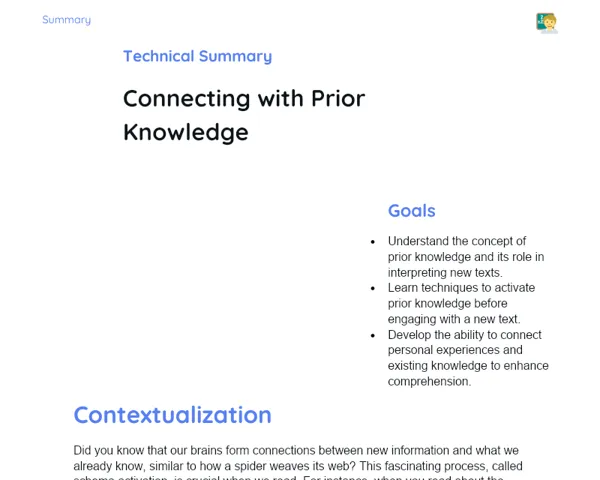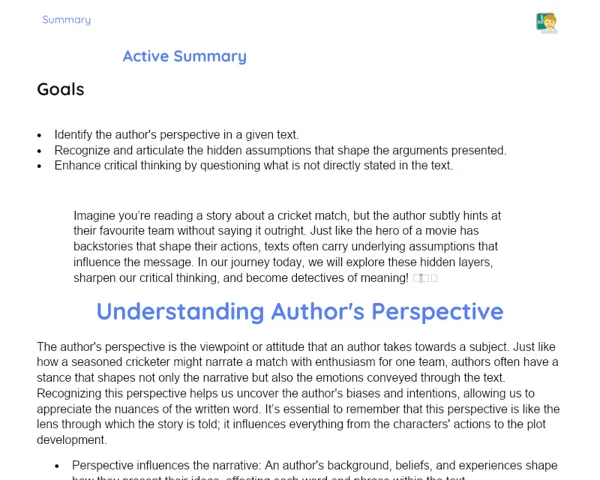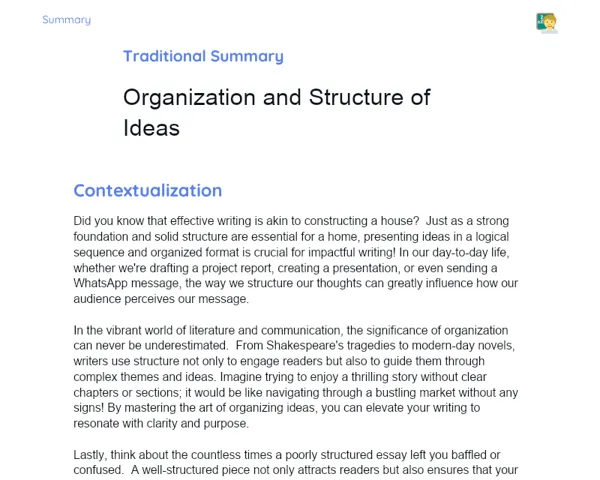Goals
1. Understand the concept of paraphrasing.
2. Identify different ways to express the same idea using synonyms.
3. Recognize and use paraphrases in various contexts.
4. Develop the skill of rewriting texts creatively.
Contextualization
Paraphrasing is a vital skill in both communication and writing, enabling us to express ideas in diverse ways without losing their essence. Think of explaining a complex topic to different groups: your friend, a teacher, and a team of coworkers. Each audience may need a distinct approach while the core idea remains unchanged. For instance, explaining 'gravity' to a young child might be phrased as 'gravity is what makes things drop to the ground,' whereas an adult might understand, 'gravity is the force that draws two objects towards each other.' Mastering the art of paraphrasing is not only beneficial in school but also invaluable in any professional setting.
Subject Relevance
To Remember!
Concept of Paraphrasing
Paraphrasing involves rephrasing a text or speech while keeping the same meaning but using different words. This technique ensures that the message remains clear and understood across various contexts and for different audiences.
-
Rewording the text while maintaining the original meaning.
-
Using synonyms and varied sentence structures.
-
Importance in clear and effective communication.
Importance of Paraphrasing in Communication
Paraphrasing is essential for preventing confusion and ensuring the receiver comprehends the intended message. It allows communication to be adaptable for various audiences and contexts, making the information clearer and more accessible.
-
Prevents misunderstandings in communication.
-
Adapts the message for different audiences.
-
Facilitates understanding of information.
Strategies for Creating Effective Paraphrases
To create effective paraphrases, it is crucial to grasp the original text, pinpoint the main ideas, and use synonyms along with different sentence structures to convey the message without changing its meaning. Practicing rewording sentences and reviewing the text for coherence and clarity are fundamental steps.
-
Comprehending the essence of the original text.
-
Identifying key ideas.
-
Using synonyms and diverse sentence structures.
-
Reviewing for coherence and clarity.
Practical Applications
-
Translating texts to adapt messages to the cultural and linguistic context of the audience.
-
Drafting reports and emails at work, where clarity and precision are key.
-
Creating marketing content that resonates with different target groups without losing the original intent.
Key Terms
-
Paraphrase: Rewording a text or speech while retaining the same meaning.
-
Synonym: A word that shares a similar meaning with another.
-
Coherence: The quality of a text that ensures a logical connection between its parts.
-
Clarity: The quality of a text that allows for easy understanding by the reader.
Questions for Reflections
-
How can improving your paraphrasing skills enhance your communication in daily life?
-
What hurdles have you encountered in crafting paraphrases, and how have you tackled them?
-
In what professional scenarios do you think paraphrasing could be particularly beneficial?
Creative Paraphrasing Challenge
This mini-challenge is designed to solidify your understanding of paraphrasing through an engaging and practical exercise.
Instructions
-
Select a recent news article from a trustworthy news source.
-
Carefully read the article and highlight the main points.
-
Compose a paragraph summarizing the article in your own words, utilizing synonyms and different sentence structures while preserving the original meaning.
-
Share your summary with a peer and ask them to identify the key information and compare it with the original article.
-
Engage in a discussion with your peer about the clarity and precision of your summary to ensure the message was retained.



